制作“紧密型”游戏需重视的指标和要素(上)
作者:Jens Peter Jensen
2012年7月,SpryFox的创意总监Daniel Cook发表了一篇关于制作容易理解和玩的游戏的文章,在文中,他提出“因果关系紧密的游戏系统”。以下是受他的文章启发而整理出来的游戏设计想法和建议。(请点击此处阅读本文下篇内容)
如何“紧密地”制作
在他的文章中,Daniel Cook解释道:“紧密的系统有清楚定义的因果关系。而在松散的系统中,则很难识别因果关系。因果循环中没有正确的‘紧密度’。”之后他列举了调整游戏紧密度的若干种方法。在本文中,我们将把他的方法解释为实用的游戏设计指标。当然,以下内容距离“使用指标追踪游戏设计的‘紧密度’ 的完全指导”还很遥远。正如Daniel写道的:
“并非所有系统都能真正遵循因果模型的直观构成。”
并非所有方法都适用于所有游戏。这还要看游戏设计师的目标是什么,有些方法很实用,有些则完全说不通。
因此,本文提到的游戏指标的例子和想法也不可能适用于所有游戏和情况。通常来说,各个追踪指标只针对特定的问题或疑问。数据追踪的过程应该总是从问题开始,这样才能挑选出要追踪的数据。另一种从数据到问题的过程可能同样有趣,但考虑到游戏开发的资金和时间限制,这种策略可能行不通。因此,本文提到的指标只适用于非常有限的情况。但愿,游戏开发者能从中受到启发,达到举一反三的目的。
1、反馈的强度
“紧密:多种准确的反馈渠道如颜色、动画、声音和触觉等,且互相强化。”
“松散:反馈渠道单一,且很不明显。在多人FPS游戏中,你觉察另一名玩家在附近的办法通常只有一种,那就是听脚步声。专家级玩家结合等级和微小的线索可以预测到对手的位置,因此从中获得极大的满足感。”
相应指标:警报和反应索引
如果你想追踪用户对反馈的反应,有几种办法可以做到。例如,如果玩家得到警告,却没有做出反应,那就说明来自警告的反馈不够强。当然,还有其他因素会影响玩家是否对警报做出反应。另外,一个玩家可能意识到警报,但选择不予回应。但如果不回应的玩家比回应的多,那就意味着反馈可能不够,必须加强。
建立追踪指示器的游戏指标也是很有意义的。如果游戏使用指示器来表示游戏状态或目标,那么就可以看看有多少玩家对它们做出反应。例如,如果屏幕上有一个指针引导玩家前往游戏目标,那么就应该追踪一下有多少玩家是跟着指针前进的。还是那句话,有许多因素会影响玩家是否跟着指针。例如,玩家要寻找的并不只是那个目标,或者玩家为了探索其他东西。但如果设计师的意图就是让玩家跟随指针前进,而多数玩家却没有,那就说明指针的反馈不够强。
追踪反馈的结果的问题是,虽然游戏指标非常有助于确定玩家做什么和什么时候做,但并不能确定玩家的意图和行动原因。这些方法虽然可用,但游戏越复杂,玩家的选择就越多,所以就更难从指标上判断玩家的意图。为了充分理解玩家意图,最好能使用定性研究方法,如有声思维游戏和谈话。
2、噪音
“紧密:原因导致的结果具有清楚的信号。”
“松散:多种不一致的、干扰的信号,且与原因并不相关。在Jeff Minter的《Space Giraffe》中的一种重要技术就是,学习看穿迷幻背景的视觉噪音。”
相应指标:听觉和视觉混乱
噪音与反馈的强度大有关系:来源太多的强反馈就会产生噪音。因此,当设计反馈的强化时,设计师应该意识到调整反馈的办法可能产生噪音和反效果,反而减弱了反馈。
衡量噪音的方法是追踪同一段时间内有多少声音在播放,并比较各个声音的音量。如果一次播放太多声音或音量相同,玩家就很难识别声音。这样,玩家的任何反应都有可能是误听或误解的结果。为了使用这个方法,有必要区分重要的和不重要的声音,比如,爆炸声可能是死掉了一个敌人杂兵,也可能是BOSS能力降低的信号。
相同的方法可以运用于追踪屏幕上一次显示了多少不同的东西。这个方法也可以用于强化表现、追踪游戏进度,或确保游戏按计划的速度进展。
3、感觉类型
“紧密:人们通常更容易接收视觉或触觉反馈。游戏公司每年花那么多钱用于提高视觉反馈,使玩家看到子弹打在虚拟的肉体上的逼真的血腥效果时,产生极大的心灵震撼。紧密的视觉反馈是高度功能性的;它能有效地向玩家传递结果,而不只是让画面漂亮。在最近升级后的《三重小镇》中,我们改变了颜色方案,这样背景就与前景物品的色值接近了。画面虽然更漂亮了,但玩家并不满意,因为图标不像以前那么显眼了。
松散:人们很难接收听觉和嗅觉上的反馈。在这方面的研究还不多,但因为这种系统产生的松散度,似乎有精通的可能。有些讽刺的现象是,大多数音乐游戏——与听觉精通最相关的游戏,关掉声音后还是能玩。”
相应指标:手指对屏幕的阻碍
因为电子游戏基本上是视觉性体验,所以有必要确定玩家能清楚地看到什么,和什么不是游戏设计的中心。手机游戏在视觉方面面临更大的挑战,因为玩家的主要操作方法就是触屏。当手指放在屏幕上时,玩家看不到的区域就增加了。
移动设备的游戏的视觉设计,特别是手机,变得非常重要。可以使用游戏指标来发现玩家在游戏时能和不能看到的东西。通过追踪玩家按下的屏幕区域可以制成热点地图。在动作游戏中,玩家必须以某种姿势持设备,根据接触的地方,可以准确地推测其他手指的位置。通过在开发过程中和发布后使用指标追踪这些因素,可以制作非常准确的地图,显示玩家在游戏时看不到的屏幕部分以及看不到的时间有多长。之后,设计师必须确保玩家看不到的部分不包含重要的或关键的信息。收集到的这些信息还可以用于确定游戏界面是否需要改变。
4、既定的心理模式
“紧密:严格地将主题、反馈和系统映射到心理模式上。因为多年浸泡在流行文化中,玩家知道僵尸如何移动以及如何躲避僵尸。一个让玩家迅速了解一群移动缓慢的怪物的最好办法就是,把它们取名为‘僵尸’。”
“松散:脱离既定的心理模式,向玩家介绍他们从来没有经历过的新系统。想一想《俄罗斯方块》中的比喻。下落的元素是我们的大脑非常熟悉的。你把方块摆成完整的一条就能消除,得分,同时音乐响起?那与你所知道的任何比喻都不相符,但它仍然是一款好游戏。”
相应指标:用户模式认知
很难用指标衡量玩家是否认出游戏设计元素,或Donald Norman所谓的“自然映射”。玩家可能知道红色的木桶通常会爆炸,但指标可以追踪的是,玩家朝木桶射击。玩家是否按设计师的意图行动是有可能追踪到的。例如,如果游戏中有黑色的木桶,指标可以追踪玩家选择射击黑色木桶还是红色木桶,或者玩家是否射击完红色木桶后是否继续射击黑色木桶。
只有当游戏中存在几个可以互相比较的物品时,这个方法才管用。游戏指标并不适合检验游戏是否有效地使用“自然映射”。设计师面临的挑战是确定和使用众所周知的和易识别的心理模式。
5、离散性
“紧密:离散状态或低数值。二进制是最紧密的。例如,最近我们正在玩一个游戏,游戏的对象是一些具有不同移动速度的单位。它们的移动的速度可以是每秒1格、2格或4格,据此,玩家可以清楚地知道各个单位是非常不同的。我最喜欢用这种方法来处理不规则的系统。”
“松散:类似值或高数值。例如,在《愤怒的小鸟》中,小鸟弹出的角度和速度有很多种变化,这使得结果非常不确定。想一想,如果你只能选择两种角度和速度,那么这款游戏的结果该有多么容易预测(和无聊)。”
相应指标:玩家行为/玩家选择
Daniel Cook所说的“离散性”是指玩家行为的特殊性和一致性、玩家角色和游戏元素相混合。这是一套难以理解的复杂概念,通常不容易追踪。但有可能查看其亚类。
例如,通过查看玩家角色,有可能追踪到玩家执行不同动作的次数。结果除了显示玩家偏好的行为,还可以体现哪些动作是多余的或不重要的。例如,如果有四种不同类型的攻击,玩家只使用其中一种,且仍然能够进展,那就说明其他三种进攻类型是多余的。因此,游戏应该重新设计,要么增加这三种类型的重要性,要么修改或直接删除它们。这种指标还可用于发现游戏中什么种族/职业、武器和建筑类型最受欢迎。
6、节奏
“紧密:原因和结果之间相距的时间短。比如在《暗黑》中,最常见的错误就是,当你把鼠标放在可以打开的箱子上时出现悬浮对话框延迟问题。如果延迟太短,悬浮对话框出现时玩家还没反应过来。如果延迟太长,玩家可能会因为对话框反应太慢而错过。(以我的经验,200毫秒是最理想的。这正是人类的认知差距的时间,即一个人决定做某事,但意识还没跟上的时间)”
“松散:原因和结果之间相距的时间长。如果因果时间相距太长,玩家可能根本不会发现原因导致的结果。想像一下,在RPG中,你有一个开关和计时器。如果你按下开关,一扇门在60秒后才打开,几乎没有人会把门打开与按下开关联系起来。但另一方面,早期投资Alpha Centauri导致最后外星人入侵的结果,使玩家要在较长的时间段内权衡策略,从而产生更加丰富有趣的系统。”
相应指标:每次游戏的因果关系
通过用户研究方法很难决定玩家是否理解行为和结果之间的关系。即使你直接询问玩家,他大概也不能向你清楚地解释他们的行为和反应。在关于人类如何理解因果联系的心理学领域,人们已经并且仍然在做大量研究。这是一个复杂的问题,对于游戏开发者来说也是艰难的任务,特别是当因果之间有一段较长的延迟时。
(在《行尸走肉》中,对话选项会影响数小时之后的事情。)
如Cook所写的,通常原则是:因果相距时间越短,玩家越容易理解之间的关系;否则就越难理解,甚至可能把结果与无关的原因联系起来。
与反馈的强度和噪音一样,使用指标来判断玩家是否理解某事物是一件困难的事,但可以通过使用创造性的指标和比较不同指标的结果来达到目的。例如,休闲游戏的每个回合时间通常很短,且玩家可以自由决定暂停和开始。这意味着如果原因和结果之间相距过远,二者可能落在不同的游戏回合中。那样,玩家就很难理解二者之间的关联。
追踪因果之间的时间紧密度(或“节奏”)的办法之一是,确定原因和结果是否落在同一个游戏回合中;也就是识别游戏内行为的原因和结果,然后建立指标来衡量原因和结果之间的游戏时间和实际时间。这么做意味着游戏设计师必须能够确定长期性玩法的结果是什么,无论是通过主观预测还是通过游戏测试。只要结果确定了,实际的指标也就形成了。
这应该只适用于因果相距较长的游戏,这里的“较长”指的是超过200毫秒。是的,人类的思考是很容易被干扰的,所以任何发生相距超过200毫秒的事都不算同时发生。如果原因和结果落在不同的游戏回合中,游戏设计师应该特别注意如何向玩家传达因果关系。还是那句话,原因和结果之间相距越久,游戏设计师就要更努力地解释二者关联。把来自“因果”的指标数据与留存率数据作比较,有助于设计师发现玩家在什么时候难以理解长期性因果关系。
(在iOS版《亚瑟王国》中,新玩家很难或者说简直不可能战胜老玩家;因为前者不可能在一周的玩家保护时间内结集100000个军事单位。)
在某些游戏中,“节奏”当然是一个更大的问题。像《Candy Crush Saga》这样的“三个匹配消除”游戏基本上只有瞬时结果,而多人策略游戏如《亚瑟王国》和社交经济游戏如《Hay Day》的因果相距非常长。如果游戏开发者希望制作一款策略游戏,并且目标是尽量把玩家长时间留在游戏里,那么他们就必须意识到原因和结果可能相距数周之远。例如,在《亚瑟王国》中,新玩家很难理解为什么在“新手保护”时间结束后,他们会比更强的对手打压,以及要怎么避免这种情况。
7、线性
“紧密:线性增加的变量具有更强的可预测性。想一想在《塞尔达传说》中沿直线扔出一把剑对比一边移动一边用回旋镖打敌人,哪一种更容易掌握?
松散:非线性增加的变量具有更弱的可预测性。在《恶魔城》中,蛇发女妖美杜莎对许多玩家来说都是很难战胜的敌人,因为她的脑袋并非做玩家设想中的线性运动。甚至像重力这样普遍的东西也让大多数玩家招架不住。毕竟,人类花了上千年时间才想出如何准确地发射炮弹。”
相应指标:难度衡量降低物品移动
在此,Cook指的似乎是玩家预测活动的能力和降低完成活动的难度。这使线性类似于前面提到的既定的心理模型。如果某物沿着直线运动,那么基本上意味着玩家可以轻易地预测它将达到什么地方,而如果某物的运动不稳定,玩家就更难预测它的去向。这只与玩法包含移动物品的游戏有关。在这类游戏中,线性直接影响游戏的难度。
(在《Frontline Commando: D-Day》中,当飞机作直线飞行时,玩家很容易打中它们。)
因此,可以建立指标来检验游戏中的物品的移动模式,以评估游戏难度。在动作游戏如《Frontline Commando: D-Day》中,玩家要预测敌人的移动才能命中他们。游戏的操作很迟钝,很难同时瞄准和射击,所以玩家的做法就是,预测目标将出现的地方,然后在那里守株待兔。那意味着游戏的难度取决于玩家预测敌人活动的能力。在这种情况下,可以建立游戏指标,根据XYZ座标来衡量线性敌人和不稳定敌人的移动方式。这样,开发者就能知道不同关卡的难度是多少,以及如何调整这个难度值。
与2D游戏相比,把位置数据变成有意义的指标更困难。在3D游戏中,开发者更难确定直线和玩家如何理解运动和预测运动,但仍然有可能通过一些参数来追踪这些信息。
8、间接性
“紧密:原因直接联系到主要结果。在《塞尔达传说》中,主要攻击方式是非常直接的。玩家按下按钮,角色就扔出剑命中附近的敌人。”
“松散:结果触发次级(或三级)系统,然后由这个系统触发结果。模拟游戏和AI因为多层间接性而难以预测。在游戏《模拟地球》中,因为变量太多,玩家经常搞不清楚发生什么情况。然而,这个庞大的间接系统足够玩家玩上几十年了。”
相应指标:代码追踪
就因果关系的强度上,这非常接近于前面所说的“节奏”的概念。节奏的指标也可以用于衡量间接性。
另一种衡量因果关系的强度的方法是估计有多少因素影响玩家的行为。在模拟游戏中,结果并非直接由玩家的行为导致的。模拟游戏有大量不同的变量会影响一连串的状态,之后这些状态又会影响其他状态。这类游戏可很容易变得复杂,甚至让游戏设计师也搞不清楚因果关系。
可以建立指标来追踪那一段程序代码影响游戏的什么状态,然后据此制作一张因果关系映射图。如果程序代码的复杂度超过程序团队可以控制的程度,这个方法就能派上用场了。通过简单地标出各个状态、值和代码调用方法产生的时间,得知因果关系。这个方法还可以当作遗漏代码的排错工具。
9、隐藏信息
“紧密:信息体现得非常明显。例如,在《三重小镇》中,游戏显示当前位置具有可消除配对。这款游戏的重点不是匹配物品,相反地,设计目标让有效的移动机会尽量明显。”
“松散:具有隐藏信息或脱离屏幕的信息。游戏如《Mastermind》的主要玩法就是让玩家仔细地解读间接线索再找到隐藏答案。移植到电脑上的桌面游戏通常会意外地隐藏掉某些信息。在桌面游戏中,系统是不可能隐藏的,因为它们是由玩家手动执行的。然而,在电脑中,这些规则通常是在后台模拟的,这样就把原本可以理解的系统变成捉摸不透的暗语。”
相应指标:常用的vs.显示的信息
不同游戏所包含的信息量也不同。《愤怒的小鸟》使用极少的状态和值,且基本上是二进制的;而《模拟城市》的状态和值就非常庞大了,需要不断地计算才能模拟城市的动态交互作用。在《模拟城市》中,不可能一次性展示所有正在处理中的信息。即使可以展示所有信息,玩家也不可能理解其意义。
(在尚未来发布的8位版《愤怒的小鸟》,屏幕上展示了力量和角度。)
尽管游戏已经大大简化,但《愤怒的小鸟》中也有隐藏信息。例如,当瞄准射击时,屏幕就不显示力量和角度了,但这是为了增加游戏的难度。
隐藏信息可以让游戏更容易,也可能让游戏更困难。因此,隐藏信息如何影响游戏主要取决于游戏的类型和设计师的意图。
检验游戏的隐藏信息的程度的办法是,追踪代码在特定时间内处理的状态和值的数量。当查看来自这个指标的数据时,游戏设计师就能知道什么信息一直在使用,然后就能决定什么应该显示在屏幕上、根据他们想达到的效果来添加或移除信息。这个数据还可以用于估计为了达到理想的复杂度,后台运行的进程是太多还是太少。
这个方法还可以用于检验有多少关于敌人单位的数据,并将其与玩家可用的信息作比较。然后通过调整信息量,可以提高或降低难度。例如,显示下一批敌人进攻的时间和地点以降低难度,或隐藏敌人的力量值以增加难度。
10、可能性
“紧密:确定性就是,相同的结果永远是由同一个原因导致的。在国际象棋中,移动的结果永远是一样的;骑士按‘L’步移动,可以吃掉斜对面的棋子。你可以想象另一种情况,你扔骰子决定赢家。你可以通过限制概率来提高紧密度,这样某个玩家扔得的骰子数就会比其他人大。《Pawn of Doom》的20面骰子太可怕了。”
“松散:可能性就是,有时候出现这样的结果,有时候出现那样的结果。在我做过的一个原型中,动作和结果相距很长时间,并且结果基本上半随机的。玩家认为游戏是完全随机的、没有任何逻辑。如果你的节奏够快,你的反馈够强,那么你就可以把它当作老虎机。”
相应指标:事件发生率
一方面,在游戏中使用单一的随机性很容易理解,即使是随机产生的,结果也仍然是可以预测的。另一方面,如果游戏中有上百个或甚至上千个结果,即使它们之间可能相互联系,那也很难控制游戏的不可预测性和它的影响。因此,建立计算特定事件的发生率的指标是有用的。这样,设计师就能检查事件是否以期望中的频率发生。
在战斗和探索游戏中,如《暗黑》系列,有一套复杂的公式来计算杀死怪物后物品掉落的概率。为了保证一般道具和稀有道具的分布情况良好,必须追踪掉落的物品是什么。
(《暗黑3》中的随机掉落物品的数量都是按标准产生的。)
收集掉落物品是《暗黑》类游戏的主要玩法,但许多玩家抱怨《暗黑3》中的掉落物品。游戏很难在奖励玩家和刺激玩家继续寻找新物品之间保持平衡。通过使用追踪物品掉落率的指标,游戏设计师可以控制游戏的平衡性。对于具有复杂的经济系统的MMO游戏,平衡性是非常重要的。以《EVE OL》为例,设计师严格 地控制物品产生的种类和数量,以保持游戏的经济平衡,使新老玩家都觉得公平。(本文为游戏邦/gamerboom.com编译,拒绝任何不保留版权的转载,如需转载请联系:游戏邦)
Building tight games with game metrics
by Jens Peter Jensen
In July 2012 Daniel Cook, Chief Creative Officer at SpryFox, published a blog post about making games easy to understand and play, which he called “Building tight game systems of cause and effect”. Here are a number of game metrics ideas and suggestions inspired by the techniques described in that post.
How to build “tightly”
In his blogpost, Daniel Cook explains that: “a tight system has clearly defined cause and effect. A loose system make is more difficult to distinguish cause and effect relationships. There is no correct ‘tightness’ of a loop.” He then enumerates several methods to tweak the tightness of a game under development. In this post, we tried to translate those aspects into actual game and player metrics. The list below is, of course, far from a complete guide for using game metrics to track game design “tightness”. As Daniel himself writes:
“Not all systems are readily amenable to the intuitive formation of models of cause and effect.”
Not all of the methods apply to all games. Depending on what the game designer is trying to accomplish, some methods will be important and others will not make any sense at all.
As a consequence, the game metrics examples and ideas mentioned here will not be applicable to all games and situations. Each tracking metric is generally designed to answer one specific question or query. The process of data tracking should always start with a question, and then the data to track can be selected. Going the other way (from data to questions) can be just as interesting, but in game development economy and time constraints make such strategies unfeasible. Therefore, the metrics mentioned here are specific to a very narrow set of tasks. Hopefully, they can be useful to game developers or inspire other uses of game metrics.
1. Strength of feedback
“Tighter: Multiple channels of aligned feedback such as colour, animation, sound, and touch that reinforce one another.”
“Looser: One channel of feedback that is weakly evident. In multiplayer FPS games often the only sense that you have that another player is near comes from the faint patter of their footsteps. Expert players gain immense satisfaction from being able to predict the location of their opponent by combining knowledge of the levels with tiny hints of where they might be.”
Corresponding Metric: Alarm and reaction index
If you want to track user response to feedback, there are several methods available depending on the desired feedback. For instance, if the player gets a warning and does not react to it, that indicates that the feedback from the warning is not strong enough. There are, of course, other factors that influence whether a player reacts to the alarm. Also, the player might acknowledge the alarm and choose to not react to it. But if there are more players who do not react than those who react, the feedback is probably not adequate and needs to be strengthened.
Hungry Shark Evolution pressure warning
It is also interesting to track indicators with game metrics. If the game uses indicators to convey game status or objectives, it could be interesting to track how much the player reacts to them. For instance if there is a pointer on the screen to lead the player towards the game objective, it would make sense to track how much the player actually follows the pointer. Again, there are many factors affecting whether a player follows a pointer: for example, whether or not it is the only objective and what possibility the game offers for exploration. But if the game is designed so that the player follows something and the player more often than not does not follow that thing, it would indicate that the feedback of the indicator is not strong enough.
The problem with tracking for the effect of feedback is that, while game metrics are excellent at determining exactly what the players do and when they do it, metrics are not good at determining player intent – the why. These methods can work but the more complex the game, and the more options the player has, and so the more difficult it is to derive player intent from metrics. To fully understand player intent it is more useful to use qualitative research methods such as think-aloud play sessions and interviews.
2. Noisiness
“Tighter: A clear signal of effect that is related to the cause.”
“Looser: A multiplicity of conflicting, attention sapping signals, which are not related to cause. One of the critical skills in Jeff Minter’s Space Giraffe is learning to see through the visual noise of the psychedelic backgrounds.”
Corresponding Metric: Acoustic and visual clutter
Noise is strongly connected to strength of feedback: too strong feedback from too many sources will create noise. Therefore, when designing increased strength of feedback, designers should be aware that their solutions to weak feedback can create noise and counter-effect the purpose of the strength increase.
A way to measure noise is to track for how many sounds are being played at any one time, and the compared volume of each. If there are too many sounds playing at one time or at the same volume level, it will be more difficult for the player to distinguish between the sounds. When that happens, any meaning or feedback that sounds are conveying will be in danger of being misheard or misunderstood. To use this method it is necessary to distinguish between important and unimportant, as an explosion might be one of a thousand basic enemies dying, or the signal that the end boss is finally vulnerable for attack.
The same method can be used to track how many different things are being displayed on the screen at any one time. This method can also be used to enhance performance, to keep track of game progression, or to make sure that the game expands and speeds up at the desired rate.
3. Sensory type
“Tighter: Visually or tactile feedback is often more clearly perceived. Consider the many billions of dollars spent on improving visual feedback each year so that we can demonstrate the visceral impact of a player’s bullet on simulated flesh with ever greater fidelity. Tight visual feedback is highly functional; it communicates the effect to the player in an elegant efficient fashion. It is not just about making pretty pictures. In a recent update of Triple Town, we changed the colour scheme so that the background was the same general value as the foreground objects. The result was attractive, but players were pissed because the icons weren’t nearly as visible as before.
Looser: Auditory and smell are less clearly perceived. Not as much has been done here, but due to the looseness that comes with such systems it would seem that there are potential systems of mastery. It is perhaps ironic that most music games, a topic typically associated with auditory mastery, can be played with the sound turned off.”
Corresponding Metric: Finger screen blocking
Deciding what is clearly visible for the player and what is not is at centre of game design, as computer games are perceived mainly visually. With mobile games there is an added challenge with the visual aspect, as the player’s main method of control is by touching the screen. That adds the aspect of what can’t the player see when the fingers are blocking part of the screen.
The visual design of games on mobile devices, especially on phones, becomes very important. It is possible to use game metrics to examine what the player can and cannot see while playing. Tracking which areas are being pressed will enable the creation of a heat map of what parts of the screen are covered and when. In the case of an action game where the player must hold the device in a certain way, it is possible to accurately extrapolate where the rest of the finger is based on the place of contact. By using metrics to track these factors both during development and after launch, it is possible to make a very accurate map of what parts of the screen are hidden from the player during play and for how long. Then the designer must make sure that the hidden parts of the screen do not contain any important or critical information. The data collected could also be used to determine if the game interface should be changed in the event that the game is played in an unexpected way.
4. Tapping existing mental models
“Tighter: Closely map the theme, feedback and system to existing mental models. Due to decades of exposure to pop culture, players know how zombies move and that they should be avoided. One means of quickly communicating the dozens of variables in a particular slow moving group of monsters is to label them ‘zombies’.”
“Looser: Step away from existing models and introduce the player to new systems that they’ve never experienced. Consider the metaphors involved in Tetris. Falling elements are something our brain can process as reasonably familiar. Tetriminos that you fit into lines that disappear to earn points while Russian music plays? That doesn’t fit any known metaphor that I know, yet it results in a great game.”
Corresponding Metric: User pattern recognition
It is very difficult for metrics to measure whether a player recognizes game design elements, or “natural mapping” as Donald Norman calls it. The problem is, again, the “why” in elusive trough metrics. A player might very well recognize that red barrels usually blow up, but all the metrics can track is that the player shot the barrel. It is possible to track whether or not a player behaves as the designer expected. For instance, if there are also black barrels in the game, metrics can track whether the player mainly shoots them first or shoots them more than the red ones, or if the player continues shooting them after they have shot a red barrel.
This method only works when there are several similar game objects to compare, and game metrics is not the best way to examine if a game uses “natural mapping” effectively. The challenge of identifying and using well known and recognizable thought models falls on the designer.
5. Discreteness
“Tighter: Discrete states or low value numbers. Binary is the tightest. For example, recently we were playing with units moving at various speeds. By making them move a 1, 2, and 4 tiles/sec, it suddenly became very obvious to the player how each unit type was distinct. This is one of my favourite techniques for getting unruly systems under control.“
“Looser: Analogue values or very high value numbers. For example, in Angry Birds, you can give your bird a wide range of angles and velocities. This makes the results surprisingly uncertain. Think of how predictable (and boring) the game would be if you could only pick two distinct angles and velocities.”
Corresponding Metric: Player action / Player selection
By “discreteness” Daniel Cook seems to mean a mix of player action distinctiveness and consistency, user agency and game elements. That is a somewhat complex collection of concepts to understand, and might be generally hard to track. But it is possible to look at the sub-categories one at the time.
For instance, by looking at user agency it is possible to track how many times the user employs the different actions available. This will reveal what actions the user prefers and will also help indicate what actions are redundant or unimportant. If for instance there are four different types of attacks and the players use only one of them and are still advancing in the game that indicates that the three other types of attack are redundant. The game then needs to be redesigned either by making the other types of attack necessary, by removing them or by modifying them. This kind of tracking is used to determine what classes, weapons and building types are most popular in games.
The race and class census of World of Warcraft
nalytical journey. If you missed the first part, you can find it here.
6. Pacing
“Tighter: Short time lapses between cause and effect. When creating mouse over boxes like you find in Diablo, a common mistake is to add a delay between when the mouse is over the inventory item and when the hover dialog appears. If the delay is too short, the hover dialog pops up when the player doesn’t expect it. If the delay is too long, the dialog feels laggy and non-responsive. (In my experience, 200ms seems ideal. That’s right inside the perception gap where you’ve decided to do something, but your conscious mind hasn’t quite caught up)“
“Looser: Long time lapses between cause and effect. Too long and the player misses that there is an effect at all. Imagine an RPG where you have a switch and a timer. If you hit the switch, a door opens 60 seconds later. Surprisingly few people will figure out that the door is linked to the switch. On the other hand, early investment in industry in Alpha Centauri resulted in alien attacks deep in the end game. This created a richer system of interesting trade off for players to manipulate over a long time span.“
Corresponding Metric: Cause and effect per game session
Determining if a player understands the correlation between action and consequence is difficult to achieve through user research methods. Even if you ask the player directly, he or she might not be able to fully explain their view upon action and reaction to you. There has been and still is a lot of research conducted within the field of psychology on how humans understand the connection between cause and effect. It is a complicated field and therefore it translates into a difficult task for game developers as well, especially if there is a large delay between the moments when cause and effect take place.
In The Walking Dead game by Telltale, dialog options can have effects that does not happen for hours.
As Cook writes, the general rule is: the shorter the time between cause and effect, the easier it is for users to understand their correlation. The longer the time between the two, the more likely it is for the user to fail to associate the two events, and the even more likely it is for them to associate the effect with another incorrect cause.
As with Strength of Feedback and Noise, using metrics to determine if the player understands something is a challenging task, but it can be done by using creative metrics and by comparing the results of different metrics. Casual games, for example, are characterized by short game sessions that stop and start at the user’s discretion. This means that if there are instances where cause and effect are far from each other, they could be in different game sessions hours apart. That would make it very difficult for the player to understand the connection between the two.
One way to track the tightness of the time between cause and effect (or “pacing”) could be by determining if cause and effect are in the same game session. That translates into identifying the cause and effect of in-game actions, and then setting up metrics to measure how much game time and real time there is between cause and effect. This does mean that the game designer has to be able to determine what the effects of long term game play are, either by prediction or through play testing. But when this is done, it would be possible to define the actual metrics.
This should apply only to instances where there is a long time between cause and effect, long meaning anything over 200ms. Yes, the human mind is easily distracted, so a long time in this instance is anything that is not instantaneous. If there are any cases where the cause and effect are in different game sessions, the game designer should take extra care in communicating the connection between cause and effect. Again, the longer the time between cause and effect, the more effort has to be put into the game design in order to explain the connection. If the metrics data from the “cause and effect” is then compared to retention data, it could help identify moments where the player has difficulty understanding long-term cause and effect relations.
In Kingdoms of Camelot for IOS, it is not just difficult but impossible to defend against “old” players. It is not possible to make 100000 troops during the one week player protection.
“Pacing” is of course a much bigger issue in some games than in others. “Match three objects” games like Candy Crush Saga have mostly only an instantaneous effect, while multiplayer strategy games like Kingdoms of Camelot and social tap economy games like Hay Day have very long time between cause and effect. If a game developer wants to make a strategy game and aims to keep the player engaged for a long time, it is very important for them to be aware of cause and effects that can be weeks apart. For instance, in Kingdoms of Camelot it can be hard for players to understand why they are being farmed by stronger players as soon as the “new player protection” ends, and what the player could have done to avoid that.
7. Linearity
“Tighter: Linearly increasing variables are more predictable. Consider the general friendliness of throwing a sword in a straight line in Zelda versus catching an enemy with an arcing boomerang while moving.
Looser: Non-linearly increasing variables, less so. The Medusa heads in Castlevania pose a surprisingly difficult challenge to many players because tracking them breaks the typical expectation linear movement. Even something as commonplace as gravity throws most people off their game. After all, it took thousands of years before we figured out how to accurately land an artillery shell.”
Corresponding Metric: Difficulty measuring trough object movement
It seems that Cook here refers to both the player’s ability to predict an action and the ease of successfully complete that action. Which makes Linearity similar to the Tapping Existing Mental Models section in part 1. It basically means that players can easily predict where something is going if it goes in a straight line, and the more erratic something is moving the more difficult it is for the player to predict its movement. This is only relevant to games where the gameplay includes objects that move. In such cases, linearity is directly tied to game difficulty.
In Frontline Commando: D-Day hitting the planes is easy when they are flying straight.
Therefore it is possible to set up a metric that looks at the movement patterns of objects in games in order to measure difficulty. In an action game like Frontline Commando: D-Day, the player depends on predicting the movements of the enemy units in order to be able to hit them. The controls are clumsy and it is difficult to aim and shoot at the same time, so the player’s main course of action is to maneuver the aim relative to where the target is going to appear, then wait and shoot. That means that the difficulty of the game depends on the player’s ability to predict enemy movement. A game metric could in this case be set up to measure how straight or erratic the enemies move, based on the x,y,z, coordinates. That would give the developer an index on how difficult the different levels are, and on how to tweak this difficulty.
Translating position data to meaningful metrics is more challenging in 3D games than in 2D games. In 3D it is more difficult to define a straight line and how player perceive movement and predict it, but it is still possible to set some parameters that track this.
8. Indirection
“Tighter: Primary effects where the cause is directly related to the effect. In Zelda again, the primary attack is highly direct. You press a button, the sword swings out and a nearby enemy is hit.”
“Looser: Secondary effects where the cause triggers a secondary (or tertiary) system that in turn triggers an effect. Simulations and AI’s are notorious for rapidly become indecipherable due to numerous levels of indirection. In a game of SimEarth, it was often possible to noodle with variables and have little idea what was actually happening. However, the immense indirection yields systems that people can play with for decades.”
Corresponding Metric: Code tracking
This is very similar to the concept of “Pacing” described earlier, in terms of how strong the connection is between cause and effect. And the metrics described in Pacing can also be used to measure the Indirection.
Another way to measure the strength of the connection between cause and effect is to measure how many agents affect the player action. Simulator games are a good example of games where effects do not originate directly from player actions. Simulators have a lot of different variables influencing a very long list of states, that then again influence other states. These kind of games can very easily become so complicated that not even the game designers can figure out the cause and effect relationships any longer.
It is possible to set up a metrics system that tracks what pieces of program code influence what game states, and that way make a map of causality. This method is useful if the program code has grown in complexity beyond what the programming team can keep track of. It is also possible to get a sense of causality by simply mapping out when each state, value and method is being called in the code. This strategy can also be used as a debugging tool for missing code.
9. Hidden information
“Tighter: Visible sequences that are readily apparent. For example, in Triple Town we signal that a current position is a match. The game isn’t about matching patterns so instead the design goal is to make the available movement opportunities as obvious as possible.”
“Looser: Hidden information or off screen information. A game like Mastermind is entirely about a hidden code that must be carefully deciphered via indirect clues. Board games that are converted into computer games often accidentally hide information. In a board game, the systems are impossible to hide because they are manually executed by the players. However, in computers the rules are often simulated in the background, turning a previously comprehensible system into mysterious gibberish.”
Corresponding Metric: used vs. displayed information
The quantity of information varies a lot from game to game. Angry Birds uses very few states and values, and most of them are binary, while Simcity has a very large amount of states and values that all need to be calculated constantly to simulate the dynamic interactions of a city. It would not be possible to display all the information being processed at any given time in Simcity. Even if this information could be displayed, users might not be able to perceive it in a meaningful way.
In this unreleased 8-bit version of Angry Birds, the power and angle are displayed on the screen.
Despite the game’s perceived simplicity, there is hidden information in Angry Birds as well. For instance the power and angle are not displayed when aiming a shot, but in this case it is to make the game more difficult.
Hiding information is connected to both making the game comprehensible and difficult. Thus, how hiding information influences a game depends heavily on what kind of game it is and what the designer is trying to achieve.
One way to examine the level of hidden information in a game is by creating a metric that tracks the number of states and values that is being handled in the code at a specific point in time. When looking at the data from this metric the game designer knows exactly what information is being used over time and can then decide what to show on the screen, adding or removing information depending on what effect they wish to create. This data can also be used to evaluate if there are too many or too few processes going on in the background to achieve the desired level of complexity in the simulation.
This method could also be used to examine how much data there is on enemy units, and compare it to what information is available to the player. Then the difficulty can be raised or lowered by tweaking the amount of information, for example by indicating the time and place of the next enemy attack or by hiding the enemy’s strength.
10. Probability
“Tighter: Deterministic where the same effect always follows a specific cause. In a game like chess, the result of a move is always the same; a knight moves in an L and will capture the piece in lands upon. You can imagine a variant where instead you roll a die to determine the winner. You can make that tighter again by constraining the probability so that certain characters roll larger dice than others. The 1d20 Pawn of Doom is a grand horror.”
“Looser: Probabilistic so that sometimes one outcome occurs but occasionally a different one happens. In one prototype I worked on there was both a long time scale between the action and the results as well as a heavily weighted but still semi-random outcome. Players were convinced that the game was completely random and had zero logic. If you pacing is fast enough and your feedback strong enough, you might be able to treat this as a slot machine.”
Corresponding Metric: Event occurrence rate
On one hand, using a single element of randomness in a game is easy to understand and the outcome, even though random, is still overseeable. On the other hand, if you have hundreds or even thousands of outcomes that might be interdependent, it is very difficult to keep an overview of the game’s unpredictability and its impact. It can therefore be helpful to create a metric that actually calculates the occurrence rate of a specific event. That way, the designer can see if the events are happening at the expected rate.
For loot drops in hack and slash games like the Diablo series, a complicated formula is used to create a random item every time a monster is killed. To make sure that the dispersion between common and rare items is the desired one, it is necessary to track what items are dropped.
Here in Diablo 3 the player is rewarded with a carefully measured dose of randomly generated items.
Looting was a major part of the gameplay in the Diablo games and many players complained about it in Diablo 3. It is very difficult to get the right balance between adequately rewarding the player and keeping them motivated to look for new items. Using game metrics that track the item drop rate, the game designer can regulate the balance of the game. This is very important in MMO games with a complex economy. EVE Online for instance has a very tight control on what items are created and in what quantity, to maintain an economical balance that is fair to both new and old players.(source:gameanalytics part1 part 2)
下一篇:列举用户卸载手机应用的五大原因

























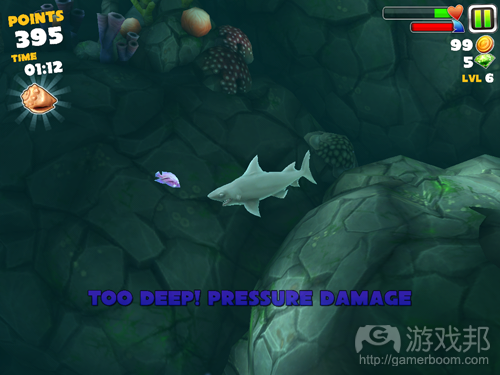
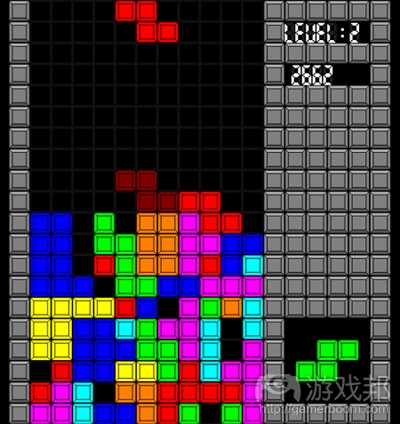

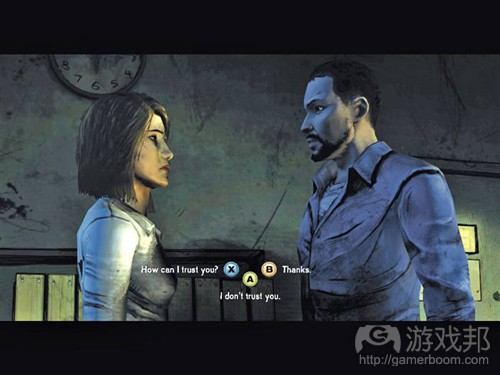
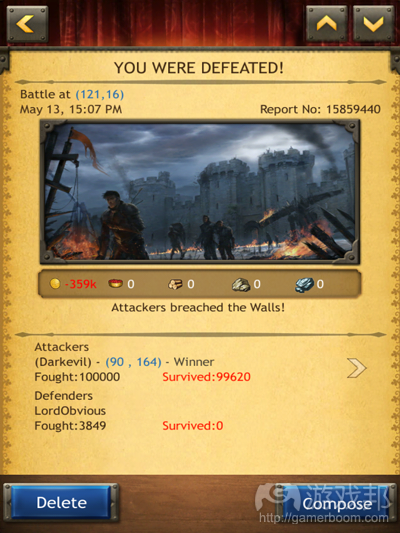
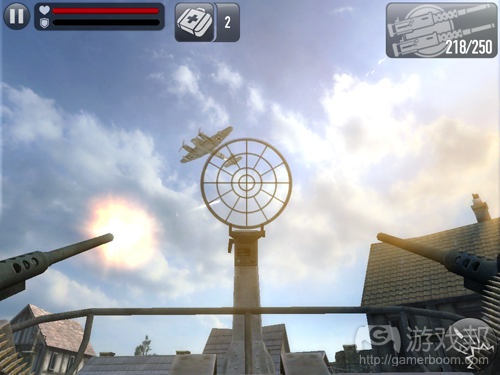
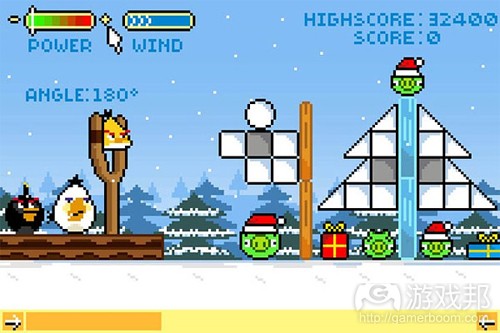















 闽公网安备35020302001549号
闽公网安备35020302001549号